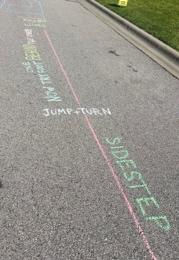Backpack Safety
- All Care Therapies

- Feb 21, 2018
- 2 min read

Children across the world are carrying books, school supplies, gym equipment, and other items in their backpack when they are off to school. Researchers have stated that backpacks oftentimes can have a weight more than 40% of a child’s body weight. Heavy backpacks can cause a child to have lower back pain. This can gravitate into adulthood, which can lead to other issues. According to the U.S Consumer Product Safety Commission, since 2010 there are 28,000 mild to severe back injuries that were treated in hospital and physician offices, which derived from backpacks.
The amount of time it takes to carry a backpack with an inadequate weight distribution, are the precursors for discomfort and potential injuries. Other side effects from carrying heavy backpacks are muscle soreness, musculoskeletal pain, respiratory issues, brachial plexus lesion, winged scapula, and damage to the shoulder.
The American Occupational Therapy Association is promoting backpack safety awareness by making the 3rd Wednesday of September as National School backpack Awareness Day. On this day educators, children parents, and healthcare professionals hold a weigh-in for backpacks, fun activities and events to bring forth the issue.
When shopping for a new backpack, parents should avoid the cosmetic approach of it and choose the one that is the correct size. The height of the backpack should extend 2 inches under the shoulder bladed to waist level or slightly above the waist. This allows the heavy items in the backpack to be positioned on the strongest part of the back. Parents should ensure the straps and back of backpack have adequate padding. When shopping, it is a good idea to shop for backpacks that have chest and hip straps to provide additional back support. It may be more appealing to carry a backpack off of one shoulder, but in order to keep a proper alignment of the spine; backpacks should be work on both shoulders. Parents should make sure their backpack weighs no more than 10% of the child’s body weight. It is necessary to choose which items should stay at home and which items are imperative for use at school. For example, instead of sending a child to school with a full water bottle, they should go to school with an empty bottle and refill it at school.
An alternate idea is to choose a backpack that has wheels. If the backpack has wheels, children are not forced to carry it on their back; they are then able to place more items in it. Parents should check the rules of their school before purchasing a backpack as well.
Jacobs, K., OTR/L, CPE. (n.d.). BACKPACK SAFETY. EDUCATION, HEALTH & FITNESS. Retrieved from http://www.parentguidenews.com/Articles/BackpackSafety




Comments